CLICK HERE for the Soapbox / Summary of the just completed (April) GB '35!
The George Batterson 1935 CW QSO Party
(Rule Changes For The Next GB Are Shown In Red)
The George Batterson 1935 QSO Party is a CW event where participants build their own transmitters using the designs, techniques, and tubes that were available up to and including 1935, then put those classic transmitters on the air and try to contact as many other 1935 stations as possible. The event is sponsored in memory of George Batterson, W2GB, who along with Bruce Kelley and Linc Cundall formed the Antique Wireless Association in 1952.
Date: Friday OCT 3rd 2300Z through Monday OCT 6th 0300Z
Just one weekend this time, with a Friday afternoon start and a Sunday evening finish ... and at a time of the year that should provide better propagation!
Objective: Contact as many 1935 stations as possible. Contact exchange consists of: RST, NAME, QTH (STATE / PROVINCE), last two digits of the YEAR of the transmitter's design, TRANSMITTER TYPE, and INPUT POWER (measured or estimated).
Rules: Transmitters must be 1935 or earlier types of self-oscillators such as the HARTLEY, TNT, TGTP, MOPA, COLPITTS, CRYSTAL POWER OSCILLATORS and CRYSTAL MOPA designed from QST, the ARRL Handbook, or any other publication or source of the period 1935 or earlier. Commercial transmitters manufactured during 1935 and earlier are also allowed. Tubes must have been available up to and including 1935. Tubes noted being used in RF service by amateurs were: 2A5, UX-210/10, 24A, 24, 27, 35, 36, 37, 41, 42, 45, 46, 47, 53, 56, 57, 59, 6A6, 6F6, 71A, 89, 203, 211, UX-250, 802.
Individual stations can be worked only once on each band. You can use any vintage or modern receiver that you wish.
Input Power: NEW! Transmitters are limited to a power INPUT of 50 watts or less. Multiply Plate Voltage x Plate Current to get your input power.
Bands: 160, 80, 40 and 20 Meters. NEW! Recommended GB window frequencies are 1800 - 1820 kc, 3540 - 3570 kc, 7040 - 7070 kc, and 14050 - 14070 kc.
It is anticipated that there will be many crystal-controlled stations in this event. As such, it will greatly increase your QSO opportunities by staying within the CW WINDOWS noted above. Also note that the lower section of 40m will be the primary window and there will likely be little or no activity in the higher region. Other contest activity on the GB weekends is minimal ... hopefully QRM should not be a major problem.
***** If you are a CQer, do not necessarily expect to be answered on your own frequency! CQers should be sure to tune the entire window (or more), for responders that may be crystal-controlled. Crystal-controlled stations that are responding to an off-frequency CQ should be sure to give a very LONG call to the other station to give them a good chance of finding you. This is a practice that all GB stations must commit to if this event is to be successful in going forward!
Scoring: Just add up your total number of legitimate 1935 QSOs. Remember that contacts with modern or high-power stations do not count. If you are contacted by a modern or high-power station, be polite, mention the George Batterson QSO Party, then move on.
Logs: Blank log forms may be obtained here.
Submit completed logs to Gary Poland, 3347 SR 28, Midland Ohio 45148, or email to [email protected]. Logs must be received no later than October 31st.
This page will be maintained for information on the coming QSO Party. I would be happy to also post pictures of any new construction related to this particular activity or pictures of transmitters / receivers that you might plan to use.
Newcomers are invited to join the Groupio AWA Builders found here.
Here is a link to the Gallery of 1929 Transmitters, also eligible for the George Batterson '35.
The 1935 Radio Amateur's Handbook can be a great source of building inspiration. As well, it will give you an indication of what tubes were popular at that time and earlier.
The '35 Handbook can be found here.
Searchable QSTs from 1915-1969 can be found here.
Note that all of the Frank Jones push-pull oscillators were popular at the time. Here is some information on my own experience with it.

The 53 (6A6) was also a popular oscillator / doubler tube with enough power to be used stand alone on-the-air. Here is my own version of a 53 transmitter for 20, 15 and 10m only.
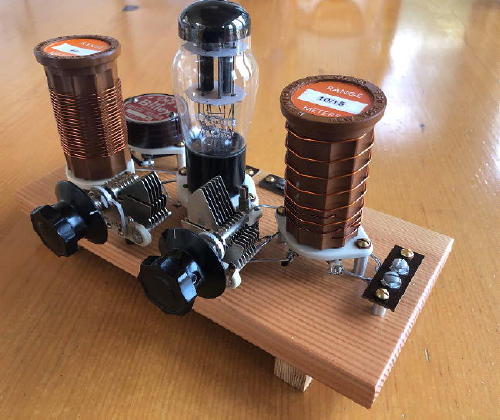
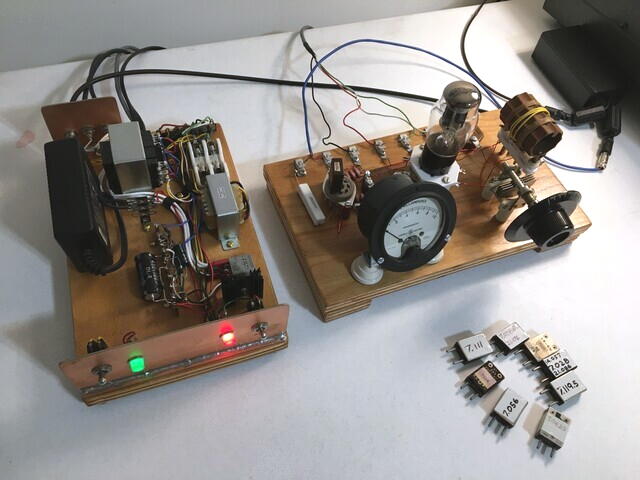
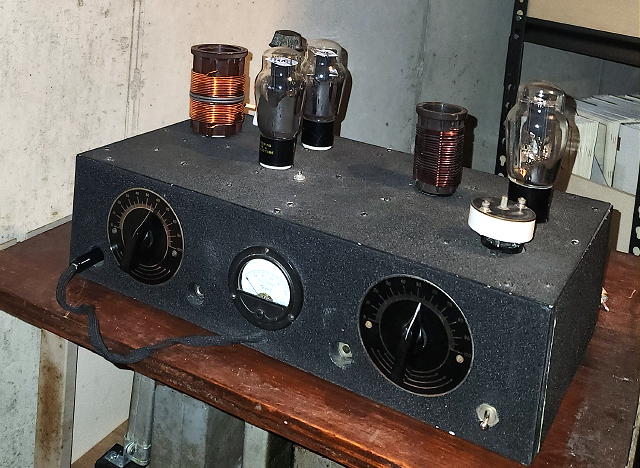
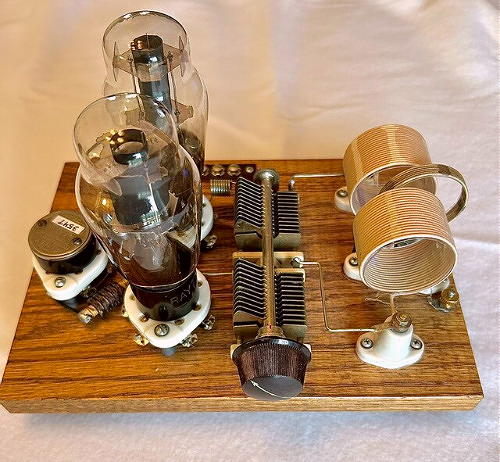
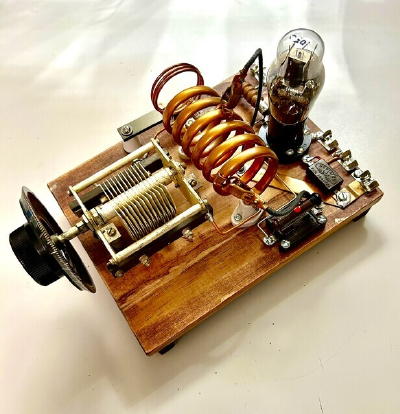
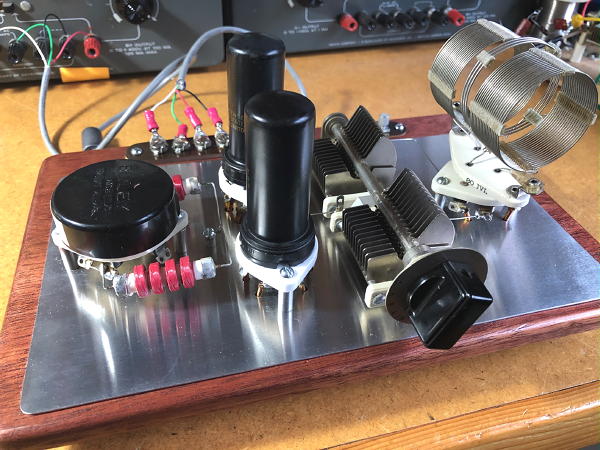
>
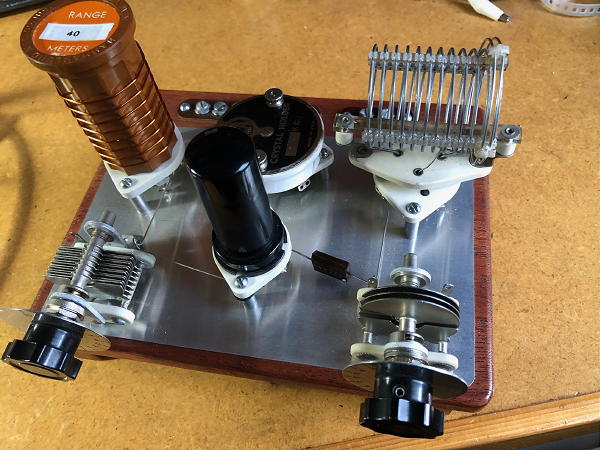
Joe, N2OUV in NY, will be using his beautifull 1934 crystal controlled Gross CW 25. It uses a 47 oscillator, 46 buffer and a pair of 46s in the PA
... a popular lineup in the mid-30s. Output is 15-20W. I'm really looking forward to hearing the Gross, and Joe!
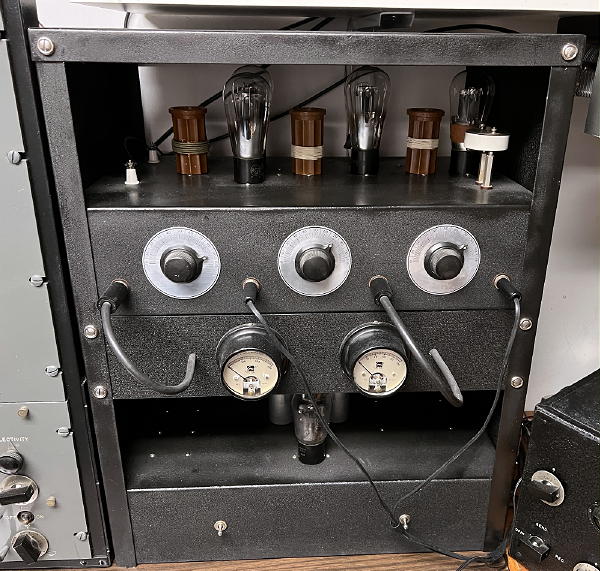
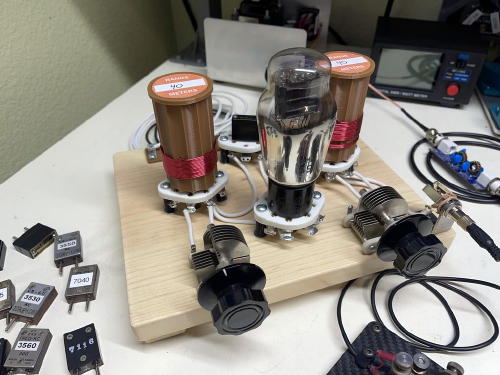
Here are some circuit ideas popular with amateurs in the early 30s and all GB eligible. Under the right conditions, all of these transmitters are capable of coast-to-coast contacts in spite of their simplicity. Hopefully you may find some homebrew inspiration here!
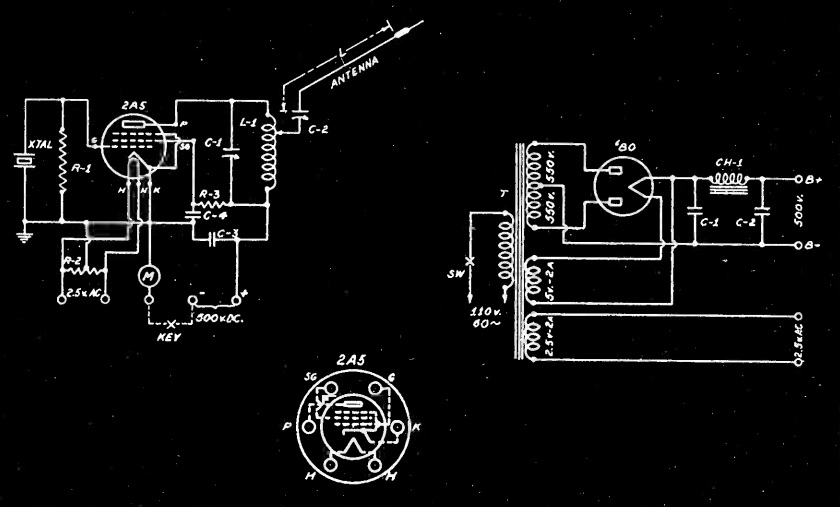
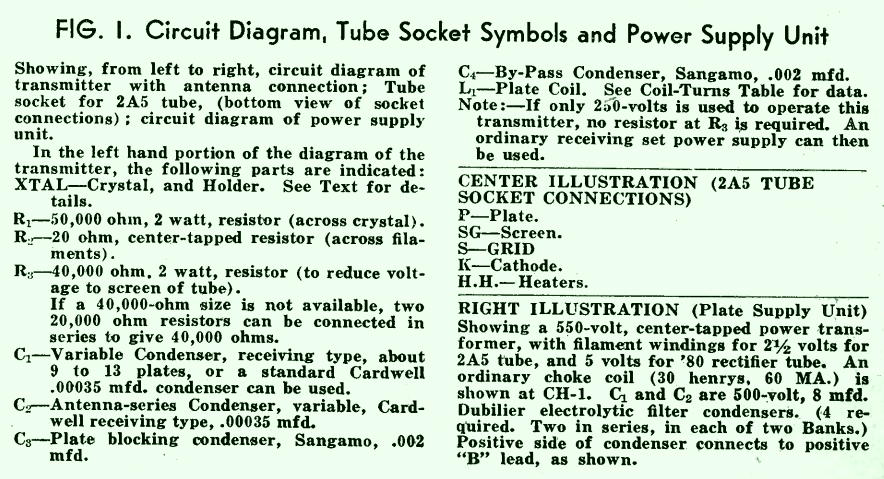
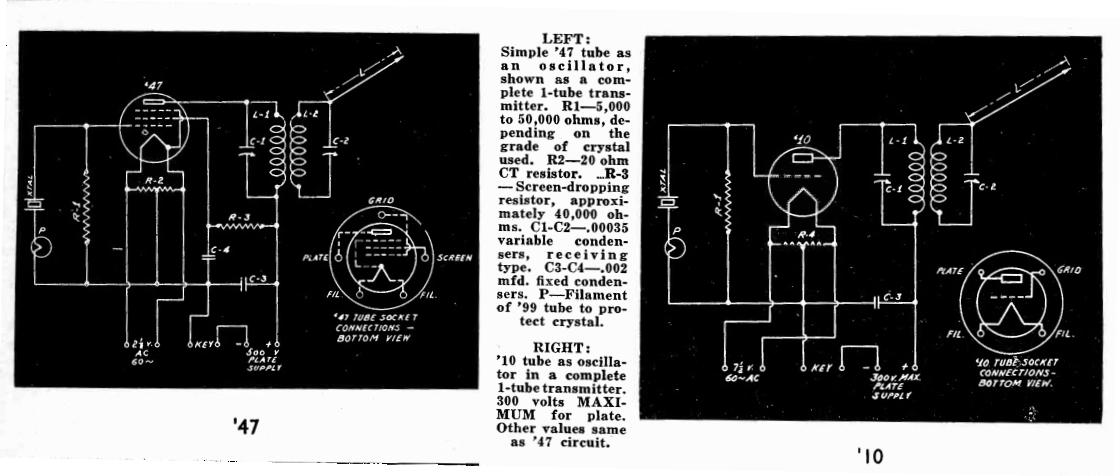
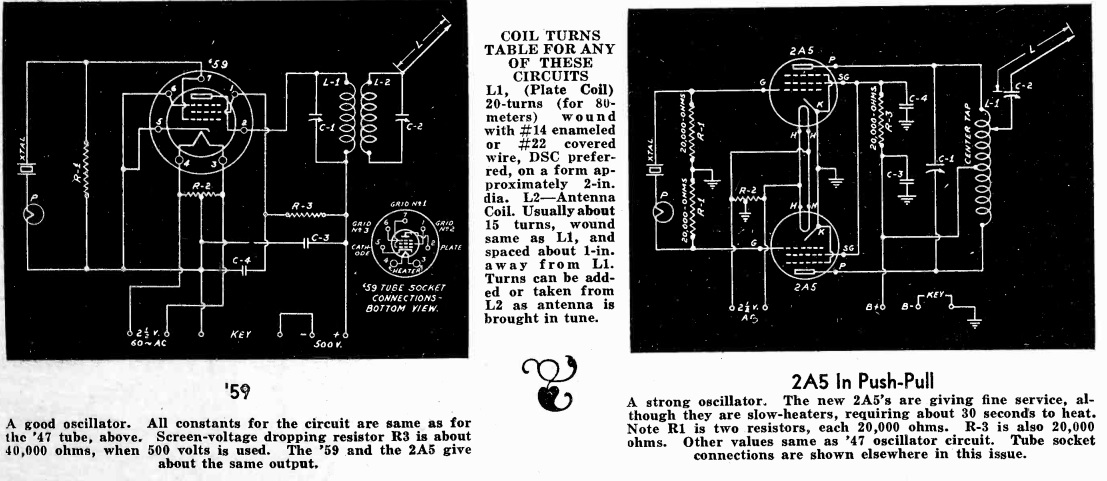
CRYSTAL-CONTROL FOR YOUR '29 MOPA
Thanks to Jim Hanlon, W8KGI, for the following mod to turn your beloved MOPA into a crystal-controlled 'XOPA'.
I've been playing around a little trying to get a 1935 crystal-controlled rig going for our upcoming event.The easiest thing for me to try was to turn the Hull Hartley oscillator in my 1929 BK MOPA into a crystal oscillator. I just got it going today, and it's working quite nicely.
The oscillator conversion was easy, and it can be reversed to a Hartley again with little effort. I needed an RFC, a clip lead, and of course a crystal socket.
The "ground" point in the oscillator circuit is the filament center tap (I'm using a 10 tube, so it doesn't have a separate cathode.) The ground is also where the B- power supply is attached and where the tap wire to the Hartley coil is connected. I moved the coil tap clip from the interior of the coil to the ground side of the coil, opposite the end of the coil that is attached to the plate of the tube through a DC blocking capacitor. My Hartley oscillator has a parallel 250 pf capacitor and 10K resistor grid leak circuit between the tube grid and the ground side of the coil. I disconnected the side of that 250 pf capacitor nearest to ground from the resistor, and I put a 2.5 mh RFC in series with the resistor to ground. I also connected a crystal socket from the tube grid to ground.
And that's it. I now have a 1935-style triode crystal oscillator.
To return to a Hartley oscillator, I just put a clip lead on the lead of the disconnected grid leak capacitor and fasten that lead back to the ground side of the resistor with the clip. The other end of the clip lead goes to ground, shorting out the RFC.
To tune the crystal oscillator, you will want to set the frequency of the oscillator tank circuit just a little bit above the crystal frequency. If you listen at the crystal frequency with your receiver and monitor the oscillator plate current, you will find a tuning region above the crystal frequency where the crystal oscillates, and as you tune the tank circuit down toward the crystal frequency the plate current will dip just like when you are tuning an amplifier. Right at the bottom of the dip, the crystal will stop oscillating. You want to set the tank tuning to just a little bit above the dip point minimum where the crystal oscillation starts easily and doesn't chirp (much) if you are keying the oscillator as I do.
My XOPA is now running nicely on 80 and 40 with a little better than 50% efficiency in the final amplifier at 25 watts input.
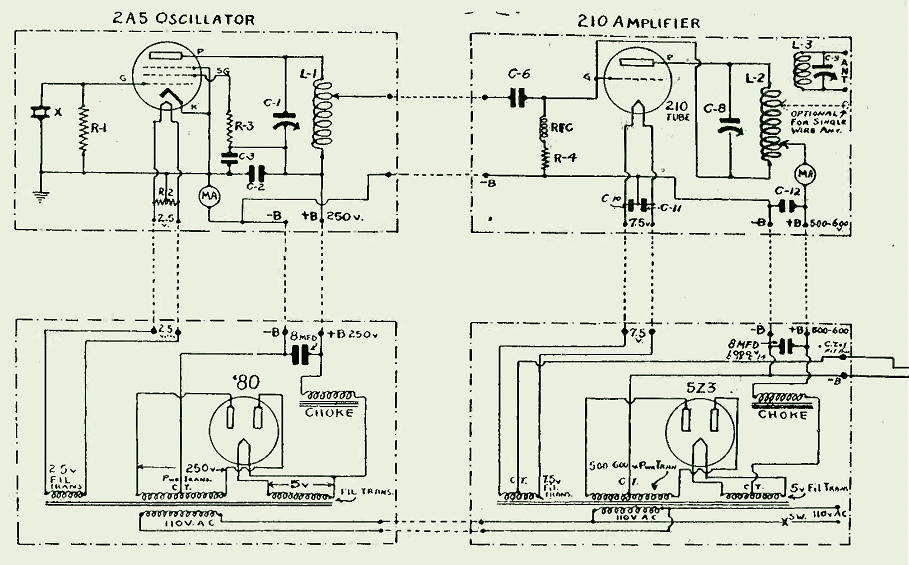
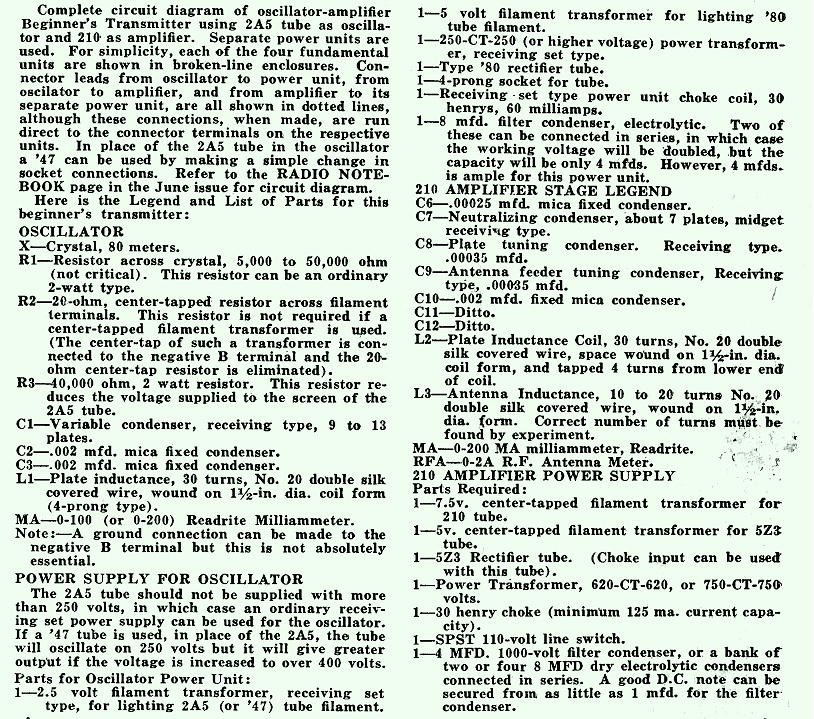
![]()